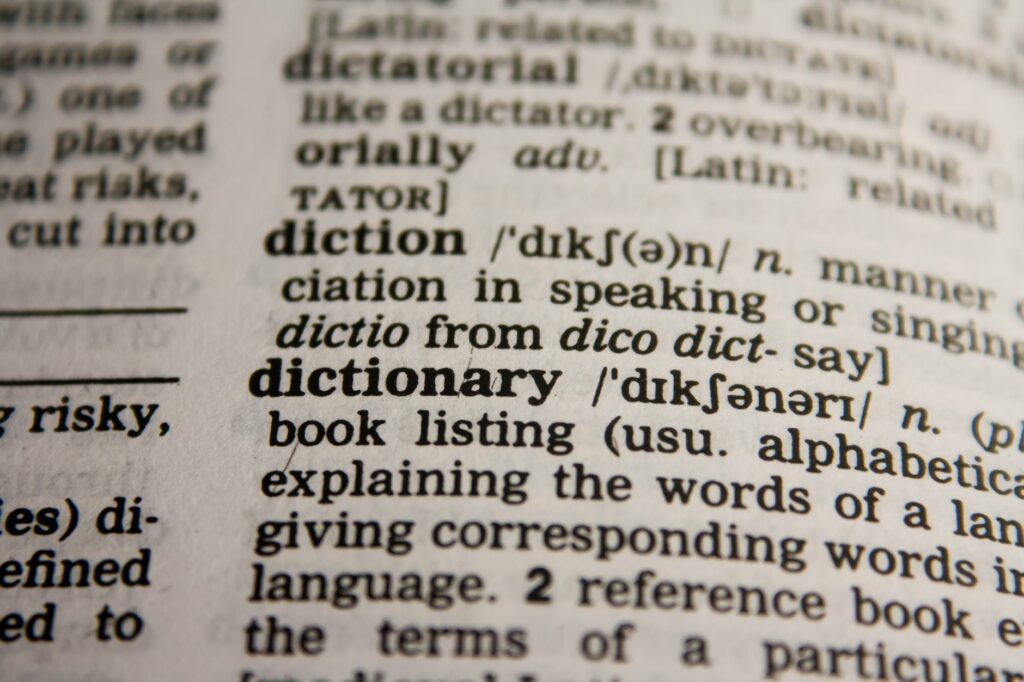Transform Your Productivity with 7 Factors For Faster Reading Speeds.
Are you tired of feeling like you’re not reading fast enough? Are you struggling to keep up with the increasing amount of information you need to process on a daily basis? The biggest roadblock between most people and a faster reading speed is subvocalization, or pronouncing the words in your head. This process slows down your reading speed because it takes longer to read words in your head than to recognize them visually. In the same way, it’s faster to read words in your head without subconsciously vocalizing them.
But why is reading speed so important? With the amount of information we process growing by the day, whether it’s emails, reports, websites, social media, books, or magazines, being able to read faster and retain more information can greatly improve your productivity and success. In this article, we’ll explore the reasons behind your reading speed and provide tips to help you improve it.

Contents
- 1 1. Language Skill is Key
- 2 2. Reading Comprehension
- 3 3. Personal Factors Affecting Reading Speed
- 4 4. Lack of Practice
- 5 5. Suboptimal Reading Environment
- 6 6. Reading Style
- 7 7. Reading Goals
- 8 Here’s a Few Suggestions to Try
- 9 The Benefits of Speed Reading
- 10 The Risks of Reading Too Fast
- 11 Summary
- 12 Suggested Reading
- 13 FAQs
1. Language Skill is Key
Language skill is indeed a key factor in determining your reading speed. The relationship between vocabulary and reading speed has been extensively studied, and research has consistently shown that those with a larger vocabulary tend to read faster. This is because a more extensive vocabulary allows for faster and easier recognition of words, which is essential for quick reading.
But how do you improve your vocabulary and language skills? One of the most effective ways is simply to read more. The more you read, the more exposure you get to new words and their meanings. This exposure helps build your vocabulary and improves your ability to recognize words quickly.
Another way to improve your language skills is to actively study and learn new words. This can be done through various means, such as reading books, using vocabulary-building apps, or taking vocabulary quizzes. By actively engaging in vocabulary-building activities, you can expand your language skills and improve your reading speed.
2. Reading Comprehension
Reading comprehension is a crucial aspect of reading that goes hand in hand with reading speed. While it’s important to read faster to improve productivity and efficiency, it’s equally important to understand and retain the information you read. After all, the ultimate goal of reading is to gain knowledge and insights from the text.
Reading too fast without understanding what you’re reading defeats the purpose of reading. If you’re reading too quickly, you may miss important details or fail to fully comprehend the text. This can lead to confusion and frustration, as well as a lack of productivity and efficiency.
To find a balance between reading speed and comprehension, there are a few strategies you can employ. First, try to improve your overall reading skills, such as active reading and note-taking. By engaging with the text and actively taking notes, you can better understand and retain the information you read.
Another strategy is to adjust your reading speed based on the type of material you’re reading. For example, if you’re reading a dense academic article, you may need to read more slowly to fully comprehend the content. On the other hand, if you’re reading a lighter piece of fiction, you may be able to read more quickly without sacrificing comprehension.
It’s also important to take breaks while reading to avoid fatigue and improve comprehension. Studies have shown that taking short breaks while reading can improve focus and retention of information. So, try to take a short break every 20-30 minutes of reading to help improve your reading comprehension.

3. Personal Factors Affecting Reading Speed
Personal factors can significantly impact your reading speed and comprehension. These factors may include concentration, vocabulary, familiarity with the subject matter, and energy level.
For instance, if you’re tired or lack focus, your reading speed may be negatively impacted. It can be difficult to maintain a fast pace while reading if you’re feeling drowsy or unfocused. If you’re struggling with concentration, it may be helpful to take a short break, change your environment, or engage in other activities to help improve your focus and attention.
Familiarity with the subject matter is also a factor that can impact your reading speed. If you’re reading about a topic that you’re not familiar with, it may take longer to process the information. On the other hand, if you’re reading about a topic you’re passionate about or have a strong knowledge base in, you may be able to read more quickly and comprehend the information better.
4. Lack of Practice
To enhance any skill, practicing regularly is vital, and this is particularly true for improving reading speed. Without consistent practice, slow reading speed is a common challenge faced by many. If you aspire to read faster, it’s imperative to integrate reading into your daily routine.
Challenge yourself to read more and at a faster pace. Setting a goal for the number of books or articles you want to read in a specific period is an excellent way to increase your reading speed. Moreover, you can utilize various tools such as timed reading drills or speed reading apps to improve your reading speed.
Consistency and patience are critical as it may take some time to witness significant progress. Remember, improvement in reading speed is achievable with consistent practice and dedication.
5. Suboptimal Reading Environment
Your reading environment can have a significant impact on your reading speed and overall reading experience. A suboptimal reading environment, such as poor lighting, distracting noises, or uncomfortable seating, can make it difficult to focus and read at an optimal speed.
One of the most important factors in creating an optimal reading environment is lighting. Poor lighting can strain your eyes, making it difficult to focus and read for an extended period. It’s important to ensure that you have adequate lighting that is not too dim or too bright.
Distractions can also be a major issue when it comes to reading speed. Noise from other people or devices can break your concentration and disrupt your reading flow. Try to find a quiet, distraction-free space where you can focus on your reading without interruptions.
Comfortable seating is another important factor in creating an optimal reading environment. Uncomfortable seating can cause physical discomfort and distract you from your reading. Make sure you’re sitting in a comfortable chair or on a comfortable surface that supports good posture and allows you to read comfortably.
In addition to these factors, there are other environmental factors that can impact your reading speed and comprehension, such as room temperature and humidity. It’s important to find an environment that is comfortable and conducive to reading to help you read at an optimal speed.

6. Reading Style
Your reading style is an important factor that can impact your reading speed. Depending on your reading style, your reading speed may vary significantly.
There are generally two types of reading styles: intensive reading and extensive reading. Intensive reading involves reading word by word, focusing on every detail and nuance of the text. This type of reading is often used when reading complex or technical material that requires a deep understanding of the subject matter.
On the other hand, extensive reading involves scanning for important information, such as key concepts or main ideas, and skipping over less important details. This type of reading is often used when reading material that is less complex or when time is a factor.
Your reading style can also be influenced by the purpose of your reading. For example, if you’re reading for pleasure, you may take your time and read word by word to fully enjoy the text. However, if you’re reading for information, you may need to read more quickly and scan for important details.
It’s important to find a reading style that works best for you and the material you’re reading. If you’re struggling with slow reading speeds, it may be helpful to experiment with different reading styles and find the one that allows you to read most efficiently. Additionally, using techniques such as skimming, scanning, or previewing can help improve your reading speed and comprehension.
7. Reading Goals
Your reading goals are another factor that can have a significant impact on your reading speed. Depending on the purpose of your reading, you may need to read at a faster or slower pace to achieve your goals.
For example, if you’re reading for leisure, you may want to take your time and fully enjoy the book, even if that means reading at a slower pace. However, if you’re reading for work or study purposes, you may need to read faster to keep up with the workload and complete your tasks on time.
It’s important to identify the reasons behind your reading speed and adjust your approach accordingly. If you’re reading for leisure and find yourself struggling to finish books or read as much as you would like, it may be helpful to set achievable reading goals and create a consistent reading schedule.
On the other hand, if you’re reading for work or study purposes and find yourself falling behind, it may be helpful to practice speed reading techniques and work on building your vocabulary to improve your reading efficiency.
Eliminating distractions and finding a comfortable reading environment can also help improve your reading speed and comprehension, regardless of your reading goals. It’s important to create an environment that allows you to focus on your reading without interruptions or discomfort.
Here’s a Few Suggestions to Try
One of the best ways to improve your reading speed is by developing good reading habits. This means finding a quiet, distraction-free space to read, and actively engaging with the material by taking notes or highlighting important passages. By doing this, you can focus your attention and retain more information, which can help you read faster in the long run.
Another approach is to use speed reading techniques. These are methods that help you read faster while still maintaining comprehension. For example, you might try skimming through the text to get a general idea of the content or scanning for specific information. Another technique is called chunking, which involves grouping words or phrases together and reading them as a single unit.
Improving your reading speed is not only about being more productive, but it can also be more enjoyable. By reading faster, you can get through material more quickly, giving you more time to do other things you love.
The Benefits of Speed Reading
Speed reading has numerous benefits such as increasing your average reading speed. By using speed reading techniques, you can absorb information much faster, which can be especially helpful for students, professionals, and anyone who needs to read a lot of material in a short amount of time. In addition to reading faster, speed reading can also increase overall comprehension and knowledge in many fields of interest. The brain receives and keeps so much knowledge during speed reading that distraction is greatly reduced, leading to higher reading productivity. Furthermore, speed reading promotes visualization while reading, which can enhance comprehension and recall of information.
To make the most out of speed reading, it’s important to set a goal and hold yourself accountable for it. It’s also worth noting that while speed reading has its benefits, it’s important to find a balance between reading speed and comprehension. Reading too fast without understanding what you’re reading defeats the purpose of reading. Ultimately, reading well means being able to read as fast or as slow as you need to, while maintaining good comprehension of what you read.

The Risks of Reading Too Fast
Reading too fast can have its downsides, despite the common belief that faster reading speed is always better. When you read too quickly, your ability to comprehend and remember the text can decrease. This is particularly true when using Rapid Serial Visual Presentation (RSVP), a technique that displays words one at a time in a rapid sequence, which can cause information overload.
While RSVP may increase the number of words that your eyes can take in per minute, it can also lead to a decline in reading comprehension and retention. When reading in RSVP, you may miss important details or nuances in the text, as you are focused on keeping up with the speed of the words.
Furthermore, reading too fast can also lead to eye strain and fatigue. When you read at a rapid pace for an extended period, your eyes may become tired and sore, making it difficult to maintain your reading speed and comprehend the text.
To avoid the risks of reading too fast, it’s important to find a reading speed that is comfortable for you and allows you to comprehend and remember the information you are reading. This may mean slowing down your reading speed or using techniques such as skimming or scanning to identify the most important information in the text.
In conclusion, while reading faster may seem like the best approach to increasing productivity and efficiency, it’s important to be aware of the potential risks of reading too fast. By finding a comfortable reading speed and using effective reading techniques, you can improve your reading efficiency and comprehension while avoiding the negative effects of rapid reading.
Summary
In conclusion, your reading speed may be holding you back from achieving your goals and processing information efficiently. By identifying the factors affecting your reading speed and implementing strategies to improve it, you can become a faster and more efficient reader.
Whether you’re reading for leisure or work, finding a comfortable reading environment, setting achievable goals, and practicing effective reading techniques can help you read more efficiently and achieve your goals.
Suggested Reading
- Read our article on how to speed read in just 30 days.
- Pan Macmillan explains how language skill is key to reading speed and how faster readers may have greater language skill and vocabulary.
- And remember to check out our speed reading blog for more tips on how to increase your reading speed.
FAQs
How can I improve my reading speed?
Some tips to improve your reading speed include practicing speed reading techniques, building your vocabulary, eliminating distractions, finding a comfortable reading environment, and setting achievable reading goals.
Does speed reading affect comprehension?
While speed reading can improve your reading speed, it’s important to find a balance between speed and comprehension. Reading too fast without understanding what you’re reading defeats the purpose of reading.
Why is language skill important for reading speed?
Research has found that the greater vocabulary you have, the faster you are able to read. Therefore, to improve your reading speed, you need to work on building your vocabulary and language skills.
Is it possible to read too fast?
Yes, reading too fast can have its downsides. Rapid Serial Visual Presentation (RSVP) may allow you to take in more words faster, but your ability to comprehend and remember the text decreases.
Can your reading environment affect your reading speed?
Yes, your reading environment can affect your reading speed. Poor lighting, distractions, or uncomfortable seating can make it difficult to focus and read at an optimal speed.

0 Comments